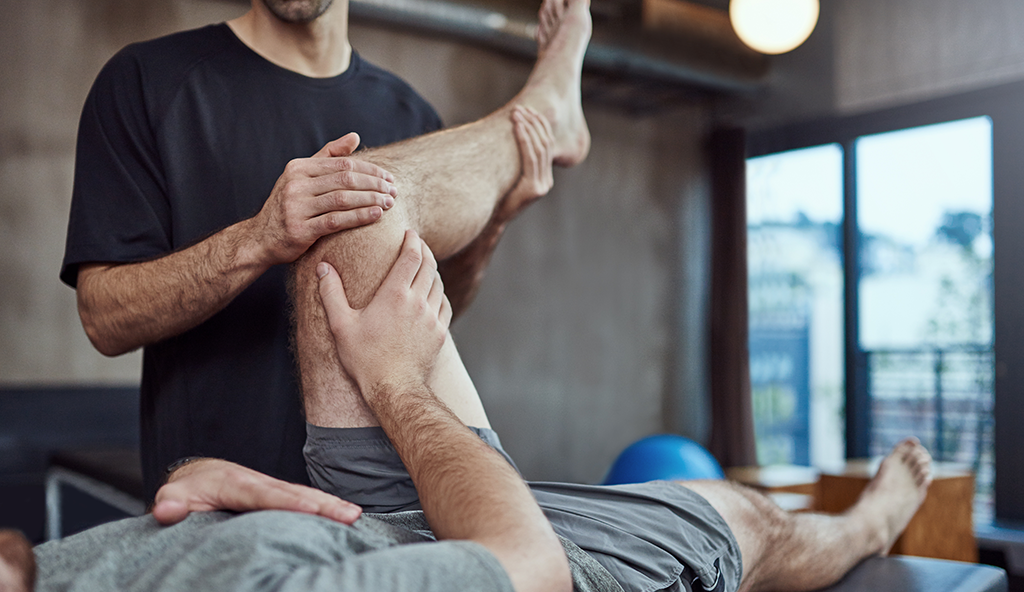Introduction & General Considerations
In orthopedics, instability occurs when patients have pain or discomfort due to abnormal looseness of a joint. When a joint completely comes out of place it is called a dislocation. When a joint partially comes out of place it is called subluxation. In almost all cases involving the hip, it takes a great force or special scenario to dislocate, such as a motor vehicle accident. Hip subluxations may require less force such as in the setting of football or soccer injuries. With these types of injury, normal stabilizing structures may be compromised, for example ligaments that normally hold the joint securely in place may become stretched or torn. Hip instability may result and in this scenario it is known as traumatic hip instability. A second type of hip instability is called acquired hip instability. This type arises from recurrent microtrauma to normal stabilizing structures. This can occur through normal activities in patients with abnormal anatomy such as in the setting of femoroacetabular impingment or hip dysplasia, or it may also occur in patients who perform certain repetitive activities which involve repetitive extreme movements which may slowly stretch the joint capsule with time.
Symptoms
Hip instability may cause one or more of the following symptoms:
- Pain or the feeling that the hip will dislocate with certain movements
- Deep aching in the hip joint
- A repetitive clicking with certain activities or movements
Diagnosis
Dr. Anz will begin with a detailed discussion regarding previous injuries, surgeries, or activities that may include repetitive motions. He will then perform a thorough exam of the hip joint and will assess the stability by performing specific movements and a series of stability tests. X-rays will be obtained to evaluate the joint space at the hip and check for underlying bony abnormalities. If a patient has dislocated or subluxed his/her hip, it is often important to obtain a more in-depth study such as an MRI scan or a CT scan.
Treatment
Non-surgical treatment is almost always the best first step. After an initial traumatic event, a period of rest to allow the capsule and/or surrounding soft tissue to heal is followed by a period of strengthening with physical therapy. In patients with acquired instability, activity modification, strengthening methods with physical therapy focusing on pelvic girdle strengthening, and anti-inflammatory medications are the initial treatments. These treatments seek to reduce hip irritation and improve dynamic stabilization (stabilization provided by muscles) for the hip joint. If these non-surgical treatments are not successful and symptoms continue, Dr. Anz may discuss surgery as an option.
Surgical Treatment
If surgery is necessary, Dr. Anz prefers an arthroscopic approach to treat hip instability. Arthroscopic hip surgery uses several keyhole incisions, a tiny camera, and special instruments to allow Dr. Anz a complete view of the inside of the hip joint. The exact type of surgery will depend on the condition and/or the nature of the injury. Thus, each surgical treatment will vary from patient to patient. In some cases, Dr. Anz will tighten the hip capsule (inner lining of the hip joint). The acetabular labrum is a structure important for hip stability. If it has been injured, it sometimes requires repair. These procedures may occur in isolation, or together, in order to stabilize the hip and improve/maintain hip motion.

Post-Operative
Dr. Anz will prescribe a progressive, thorough physical therapy program following arthroscopic surgery. Working diligently with a therapist after a hip surgery is important to regain motion, strength, and function. Dr. Anz and his staff will outline a customized therapy regimen to guide patients toward the best recovery possible after their surgery.
—
If you have any questions relating to hip instability or any other hip related injuries, please contact the Gulf Breeze, Florida orthopedic surgeon, Dr. Adam Anz located at the Andrews Institute.




